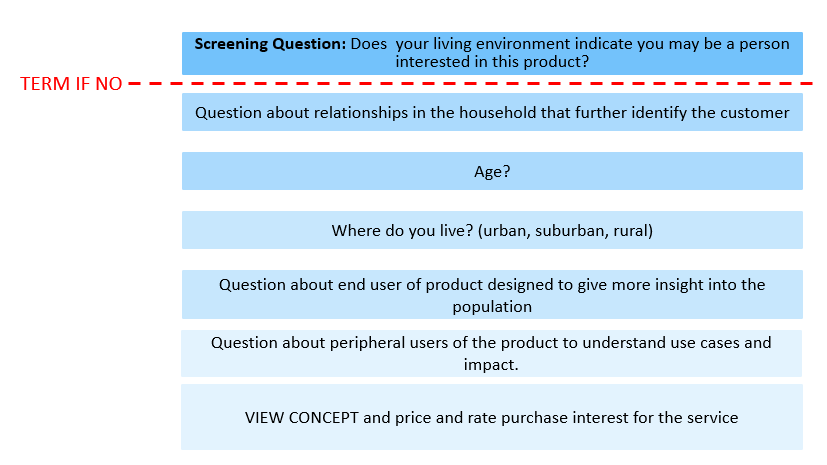An omnibus survey is a method of quantitative marketing research where data on a wide variety of subjects is collected during the same interview. It's an efficient way to answer questions of small scope with broad targeting criteria. Below, we will walk through a case study in which an omnibus survey was an ideal market research solution.
A client came to us with the challenge of better understanding the potential size of the market for a new product they were developing. They had a limited budget and hypothesized there was a huge opportunity, but needed some data to back-up a go/no-go decision.
Rather than develop a unique survey and sample pool, MDRG decided to use an omnibus survey to answer this question. In this scenario, an omnibus represented the most efficient opportunity for the client to gain the insights they needed. First, the objective of the project was precise and limited. Second, the project required a sample representative of the U.S. population.
- MDRG first shared a description of the product and asked interest in purchasing the product.
- In the analysis, a discounting model was applied to estimate the percentage of respondents that would actually purchase.
- Further, we asked an additional set of questions specific to how the product to further understand the target and the most prevalent use case.

RESULTS
- Learned that the market was about 6% of the total U.S. population.
- Identified specific attributes about those interested in purchase and the use cases in which they would be applying the product.
- Developed a demographic profile of the target for future research and marketing purposes.
TOTAL COST <$10,000
As a result of this simple study, the client received the insights needed to understand the interest in their product at their hypothesized viable price, uncovered the primary use cases of their product, and better defined their target. Ultimately, the client developed a business case that included data on how the product would be used, who would use it, and feel confident in the recommendations they made to leadership regarding the level of investment for a prototype.
Are you eager to stay ahead of the curve in your industry? Sign up for our monthly insights email and gain exclusive access to valuable market research, industry trends, and actionable recommendations delivered directly to your inbox.
Topics from this blog: Consumer Insights Research Methods